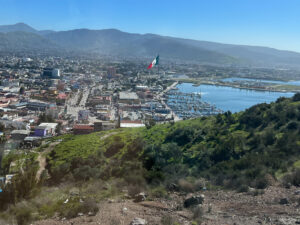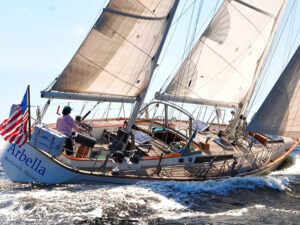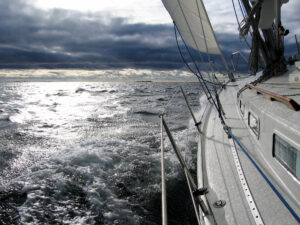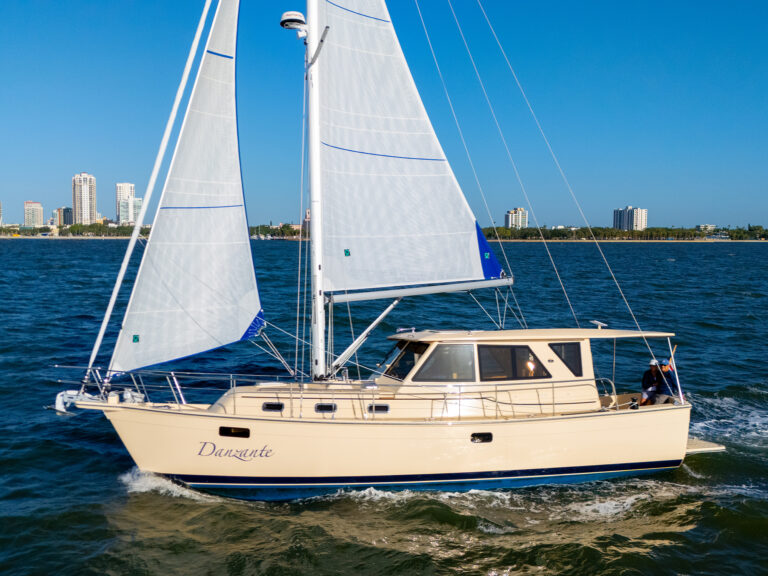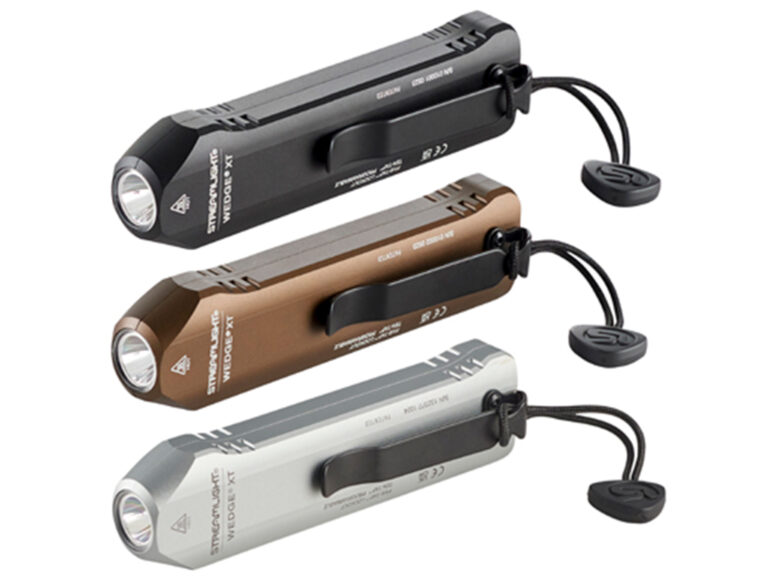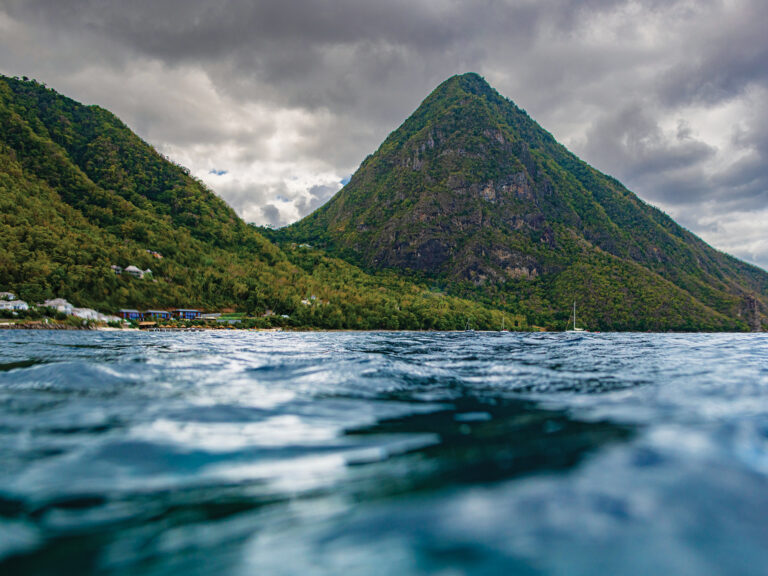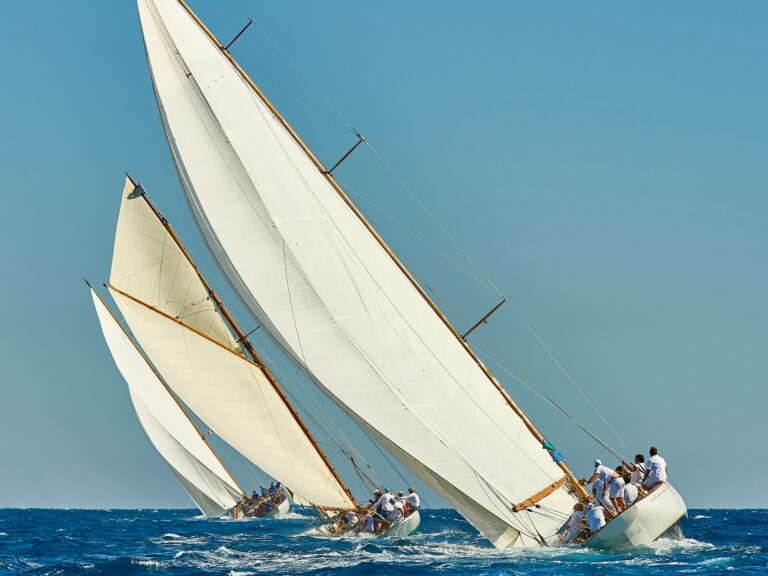NARC boats followed three different routes from Newport to Bermuda, and each itinerary tested the skills and strategies of both captains and crews. If you read between the lines, the lists of broken equipment, and routes taken or bypassed, told stories all their own.
The rhumb line: Two vessels sailed the rhumb line to Bermuda, and this pair finished the first leg in first and second place. One of them, the Swan 46 Pipe Dream, which arrived at St. George’s first, held steadfastly to the rhumb-line course, and sailing at seven to eight knots, she was knocked down three times in 18 hours as the wind shifted from forward to just aft of the beam.
One knockdown tossed a crewman across the cockpit. While airborne, he ripped the binnacle compass from its mount and the stainless-steel grab bar from its supports. In the same knockdown, a body slam by the helmsman bent the wheel so far out of true that it was difficult to steer. Another knockdown ripped the triple-reefed mainsail in two places, rendering the sail unusable. An aluminum passarelle lashed to the lifeline stanchions caught so many big waves that two stanchions were broken and two more were severely bent. During the blow, this boat had a jerry jug of diesel fuel in the lazarette burst, spilling its noxious contents into the bilge. While Pipe Dream finished first in the Bermuda leg, it was a costly result.
The other boat to run the rhumb line was the Swan 48 Hinano, which experienced no storm-related damage. Two days before the storm, the bight of the jib-head shackle broke away, probably due to fatigue. The sail dropped and went overboard, but the crew was able to quickly retrieve it and rerig it on a spare halyard. At the height of the blow, under staysail alone, her crew put the wind and the waves off her quarter and headed for Africa.
The western route: The fleet’s 15 other boats charted a course 100 to 200 miles west of the rhumb line. Ten of these crossed the Gulf Stream at a narrow point, then turned for Bermuda. Boats that threw in this dogleg reported more confused seas and higher wind gusts than those that sailed straight for Bermuda. Several of these vessels had their share of mechanical and electrical problems, but those were maintenance issues unrelated to the storm. One boat’s coachroof-mounted life raft disappeared over the side. Several boats had crew-overboard devices washed away from their mounts on the outsides of stern rails. Most of the crews that went west suffered nothing worse than wild rides.
The crew of the Swan 46 Babe trapped its errant life raft on the side deck just as the kit was about to jump ship. The staysail on that same boat blew out, so the captain unrolled a patch of jib. At the height of the storm, the jib’s leech ripped, so they sailed under bare poles with the wind off the stern. Still, the 46 lost its navigational sidelights, and the radar reflector was blown off the mast. The mainsail headboard was torn at the sail slides. The saloon cabinets couldn’t hold their contents during the storm, and the resulting debris became a hazard in the cabin.
Sailing under reefed jib and triple-reefed main, the Swan 44 Laughing Lady had its boom sheared cleanly just forward of the boom-vang attachment during an accidental jibe. The full force of 35 knots of wind whipped the sail over to leeward and snapped the boom in two. The mainsail was ripped to shreds.
Few cruising boats are built to be dropped vertically off huge waves. Sailing at seven knots, beam to the wind and waves, Break’nWind, a Hunter HC50, fell off an unusually large and steep wave, slamming into the trough far below. The impact of the free fall bent the boom vang, a two-inch stainless-steel tube with a stainless-steel ram inside, into a semicircle and crushed the ends of bulkheads and interior furniture.
The HC50’s forward running lights were washed away, and its MOB buoy disappeared along with the stern anchor. The furling line for the storm staysail had chafed through, preventing the use of this valuable heavy-weather sail. A crewmember who was flung across the cockpit grabbed the engine throttle to stop his progress and ripped it out of the binnacle.
Break’nWind also lost its SSB radio antenna tuner during the bad weather, and its Mini-M satellite phone went down. The boat was sailed by a delivery crew back to Hunter Marine’s Alachua, Florida, plant for repairs. A Hunter spokesman said there was “no major structural damage.” On the backside of this same low, in the Caribbean 1500, BOC Challenge veteran Steve Pettengill sailed the HC50 Hunter’s Child II to first in class and first overall with no damage or problems.
Harbor of refuge: In advance of the approaching cold front, five NARC boats practiced weather avoidance. Rather than turning for Bermuda, they sailed another 100 miles west and took shelter for two days in Cape May, New Jersey. The highest winds these boats experienced was 30 knots, and none incurred storm-related damage. Undeterred by the tight schedule a rally must sometimes follow, this quintet chose the option many seasoned cruisers would’ve employed in the same situation.
Patrick Childress

